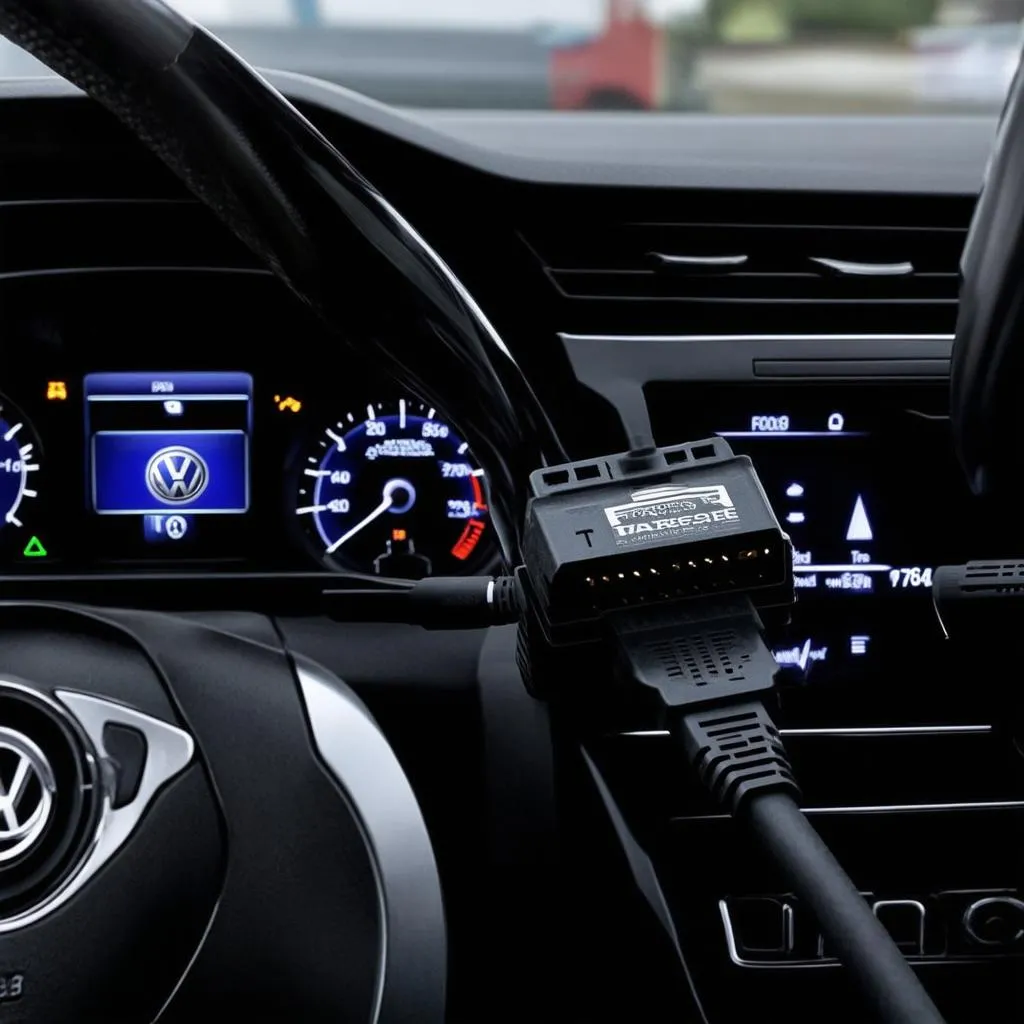The AGR valve, or Exhaust Gas Recirculation valve, plays a crucial role in reducing nitrogen oxide emissions in diesel engines. However, it can also become a source of problems, leading to performance issues and costly repairs. This article provides a detailed guide on how to deactivate the AGR valve using VCDS (Vag-Com Diagnostic System), a powerful diagnostic tool for Volkswagen, Audi, Seat, and Skoda vehicles.
Understanding the AGR system and its potential issues is the first step towards effective troubleshooting. The AGR valve recirculates a portion of exhaust gases back into the intake manifold, lowering combustion temperatures and reducing NOx emissions. However, over time, carbon deposits can build up on the valve and within the intake system, causing the valve to stick or malfunction. This can lead to reduced engine power, rough idling, and increased fuel consumption. In some cases, a faulty AGR valve can even trigger a check engine light.
Understanding the Implications of AGR Deactivation
Deactivating the AGR valve with VCDS can offer a temporary solution to these issues, especially when a replacement valve isn’t immediately available. However, it’s crucial to understand the implications of this action. Disabling the AGR system will increase NOx emissions, potentially violating emission regulations in your area. Furthermore, while VCDS deactivation can alleviate immediate symptoms, it doesn’t address the underlying cause of the problem. Therefore, it’s essential to consider AGR deactivation as a temporary fix and plan for a proper repair, which typically involves cleaning or replacing the AGR valve and associated components.
Step-by-Step Guide to Deactivating the AGR Valve using VCDS
Before starting the process, ensure you have a genuine VCDS cable and the latest version of the software installed on your computer. Connect the VCDS cable to your vehicle’s OBD-II port and launch the software.
- Select “Select Control Module”: This initiates the connection between VCDS and your car’s electronic control units (ECUs).
- Choose “Engine”: This directs the software to the engine control module, where the AGR settings reside.
- Navigate to “Adaptation”: This section allows you to modify various engine parameters, including the AGR valve operation.
- Locate “AGR Adaptation Channel”: The specific channel number varies depending on the engine code and model year of your vehicle. Consult the VCDS label file or online forums for the correct channel.
- Adjust the Value: Typically, changing the adaptation value to “0” effectively deactivates the AGR valve. However, some vehicles may require a different value. Always refer to reliable sources for the correct procedure for your specific car.
- Save the Changes: After adjusting the value, save the changes in VCDS to apply the modification.
- Test Drive: Take your car for a test drive to verify that the AGR valve is deactivated and the symptoms have improved.
What are the Common Issues Related to AGR Valve?
Common AGR valve issues include carbon buildup, sticking, and electrical malfunctions. Symptoms can range from reduced engine performance and rough idling to increased emissions and a check engine light. While VCDS deactivation can provide temporary relief, a long-term solution requires cleaning or replacing the faulty components.
“Regular maintenance is key to preventing AGR valve problems,” says John Miller, a seasoned automotive technician with over 20 years of experience. “Cleaning the intake system and the AGR valve periodically can significantly extend their lifespan.”
Conclusion: AGR Deactivation with VCDS – A Temporary Solution
Deactivating the AGR valve with VCDS can provide a temporary fix for AGR-related issues, offering immediate relief from performance problems. However, it’s essential to understand this is not a permanent solution. It’s crucial to address the root cause of the problem, often involving cleaning or replacing the AGR valve and related components. Remember to consult reliable sources for the correct procedure for your specific vehicle and be aware of the potential impact on emissions regulations.
For a broader understanding of what VCDS can do, check out our article: what can i do with vcds
Need help with your car’s diagnostics? Contact us via Whatsapp: +1 (641) 206-8880, Email: [email protected] Or visit us at: 276 Reock St, City of Orange, NJ 07050, United States. Our customer support team is available 24/7.


